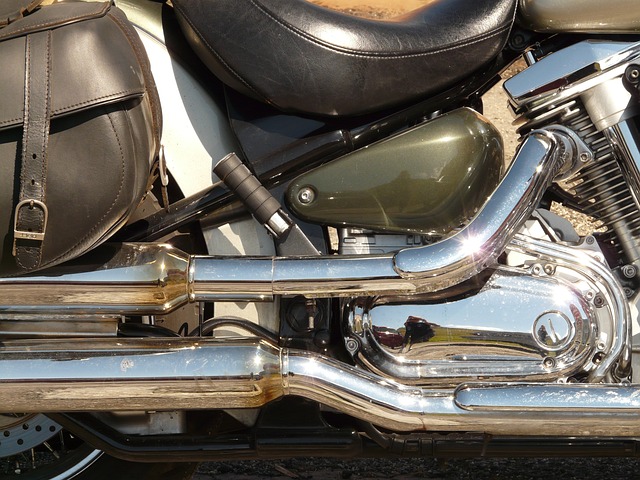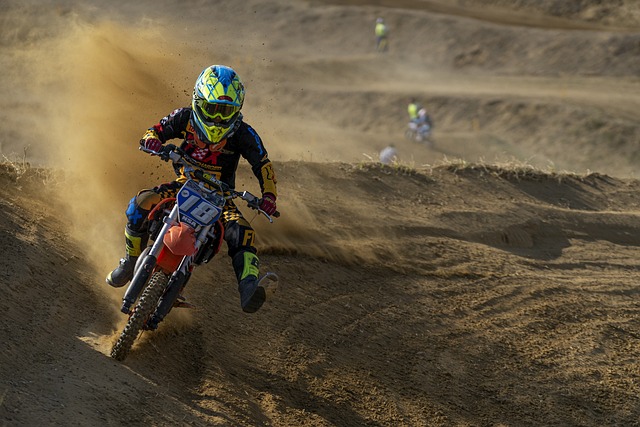Have you ever wondered how hot the exhaust of a motorcycle really gets?
It’s easy to underestimate the amount of heat that is generated from a motorcycle engine, but it can be extremely dangerous to do so.
While the roar and thrill of a revving engine may be exciting, its heat output should never be taken lightly.
In this article, we’ll explore the science behind motorcycle exhaust heat, factors affecting its temperature, and safety tips for those who choose to ride with extreme caution.
You’ll gain an understanding of why it’s important to know exactly how hot motorcycle exhaust can get and what dangers lie ahead if you don’t take proper precautions.
Key Takeaways
- Motorcycle exhaust temperatures can reach over 1,500°F (816°C) and regular maintenance can help keep them lower.
- Factors such as engine size, air flow, and fuel type affect the heat produced by the exhaust.
- Heat transfer in a motorcycle engine occurs through dissipation efficiency and heat shielding.
- Installing a catalytic converter can help reduce harmful emissions and wearing protective gear is important to prevent skin burns and damage to clothing.
Overview of Motorcycle Exhaust
Hot enough to fry an egg? You’d be surprised how hot motorcycle exhaust gets! Motorcycle exhaust is the result of the combustion process that occurs inside the engine. As fuel and air are pushed into the cylinders, they mix and ignite, pushing out hot gasses through the exhaust system. The temperature of these gasses can reach over 1,500°F (816°C).
Reducing emissions from motorcycles can involve controlling the amount of fuel and air entering the engine as well as proper engine maintenance. Keeping up with regular tune-ups can ensure your bike runs efficiently and prevents build-up in your exhaust system, which will help keep temperatures lower.
Additionally, adding a catalytic converter to your motorcycle’s exhaust system helps reduce harmful emissions emitted into the atmosphere.
The Science Behind Motorcycle Exhaust Heat
You’re probably wondering how a motorcycle exhaust can become so hot. The answer lies in the combustion process and heat transfer. When fuel is combusted, it releases energy in the form of heat.
This heat then transfers from the cylinders to the exhaust system where it is released into the atmosphere. The hotter this process gets, the higher temperature of exhaust that will be expelled from your motorcycle’s tailpipe.
Combustion process
The combustion process in a motorcycle engine can generate incredibly high temperatures – up to 2000°F, as seen in a case study of a Yamaha V-Max. Fuel is inhaled into the combustion chamber where it is ignited through compression heat or spark plug ignition. The combination of fuel and air creates an explosion that drives the piston down and powers the engine. The result of this process generates exhaust gases that are expelled from the cylinder head at incredibly hot temperatures.
| Fuel Ignition | Combustion Chamber |
|---|---|
| Compression Heat | Intake Valve Inhalation |
| Spark Plug Ignition | Combustion Explosion |
| Exhaust Gas Expulsion | High Temperatures (up to 2000°F) |
Heat transfer
Heat transfer in a motorcycle engine occurs rapidly, transferring the heat generated by combustion quickly away from the chamber. This is done through a combination of dissipation efficiency and heat shielding, both of which are designed to keep temperatures low and protect components from damage.
Dissipation efficiency is achieved when the exhaust system dissipates heat energy as it leaves the cylinder head, reducing overall temperature. Heat shielding, on the other hand, uses special materials like ceramic coatings that help reflect and contain heat around certain parts of the engine. These two methods work together to ensure proper cooling of all components.
The end result is an efficient system that maintains lower temperatures while providing maximum power output from the bike’s motor.
Factors Affecting Exhaust Heat
Understanding the factors that affect exhaust heat can help you get the most out of your motorcycle, even if you’re skeptical of its value. Heat transfer in a motorcycle’s exhaust system depends on three primary elements: engine size, air flow, and fuel type.
First, engine size affects how much heat is generated by the combustion process. Larger engines generate more heat than smaller ones, so larger motorcycles will typically have higher temperatures coming from their exhaust.
Second, air flow around and through the exhaust pipes influences how quickly heat dissipates and is carried away from the system. If there’s too little air moving around or through an exhaust pipe, it will be difficult to reduce the temperature of the gases exiting it.
Third, different fuel types put out different temperatures when burned within an internal combustion engine. Some fuels generate hotter gases than others, which can cause higher temperature readings for your motorcycle’s exhaust system without any other changes being made to it.
By understanding these variables – engine size, air flow, and fuel type – you can make better decisions about managing your motorcycle’s performance and keeping its parts cool during operation.
How Hot Does Motorcycle Exhaust Get?
Now that you understand the factors affecting exhaust heat on motorcycles, it’s time to answer the question: how hot does motorcycle exhaust get?
The amount of heat generated by a motorcycle’s exhaust depends on several factors, including engine maintenance and size. Generally speaking, smaller engines produce less heat than larger ones. Additionally, having an up-to-date engine maintenance schedule can help keep your bike running at optimal temperatures.
In most cases, the temperature of a properly maintained motorcycle’s exhaust should range between 250°F and 500°F. This may seem hot but is actually much cooler than other types of vehicles like cars or trucks, which can reach up to 800°F or higher in some cases.
It’s important to remember that keeping your bike well maintained is essential for reducing noise levels as well as controlling exhaust heat.
Potential Dangers of Hot Exhaust
With temperatures reaching up to 500°F, it’s important to be aware of the potential dangers that come from a hot motorcycle exhaust. The extreme heat can cause skin burns if you accidentally touch the muffler or other parts of the exhaust system. Additionally, it can cause damage to clothing if you’re wearing loose-fitting fabric that comes in contact with the exhaust.
You should take steps to protect yourself from these risks, such as wearing protective gear like gloves and having a heat shield installed on your bike. If you’re concerned about whether your bike is running too hot, have it inspected by a professional mechanic who can advise you on how best to keep it in proper operating condition.
Exhaust Heat Safety Tips
Keep yourself safe from potentially searing exhaust temperatures by taking the necessary precautions. To avoid exhaust heat, it’s important to wear protective clothing like pants and boots that aren’t flammable.
There are also several ways to cool down an overheating motorcycle:
- Repair:
- Check and replace any faulty parts that could cause excessive heat levels
- Add additional cooling components like fans or radiators
- Maintenance:
- Clean air filters regularly for optimal airflow
- Make sure the engine’s running at the correct temperature levels
By following these safety tips, you can ensure a safer riding experience without worrying about hot exhaust temperatures.
Frequently Asked Questions
What type of insulation should I use on my motorcycle exhaust?
You should consider using a ceramic coating or heat shielding on your motorcycle exhaust. This insulation will help keep the exhaust from becoming too hot, protecting your engine and other components. It’s an easy way to add long-term protection for your bike.
Does the type of fuel I use affect the heat of my motorcycle exhaust?
Yes, the type of fuel you use can affect the heat of your motorcycle exhaust. Fuel efficiency and emission levels are both affected by the type of fuel used, which in turn affects how hot the exhaust gets.
How can I tell if my motorcycle exhaust is too hot?
Be warned – your motorcycle exhaust can get dangerously hot! Look for signs like discolored exhaust coating or fuel additives that have burnt off. Take the necessary precautions to ensure you’re riding safely.
How can I reduce the heat of my motorcycle exhaust?
You can reduce the heat of your motorcycle exhaust by installing an aftermarket exhaust system. This will help to minimize noise from the engine and exhaust fumes. It will also reduce the temperature of the exhaust gases, keeping your bike running cooler.
How can I avoid getting burned by my motorcycle exhaust?
Have you ever been burned by a hot motorcycle exhaust? To avoid this, consider engine tuning and exhaust coating. These solutions will help reduce the heat from your motorcycle’s exhaust, keeping you safe from any painful burns.
Conclusion
In conclusion, motorcycle exhaust can get incredibly hot. Depending on the type of bike and its usage, temperatures can reach up to 1000°F! At this temperature, it’s like having a small furnace attached to your vehicle.
It’s important to take proper safety precautions when working with hot exhaust, as even brief contact with skin could cause serious burns or even worse. Think of it like handling burning coals: you need to be careful and respect the heat.
With that in mind, you can hit the open road knowing your safety is in check.



